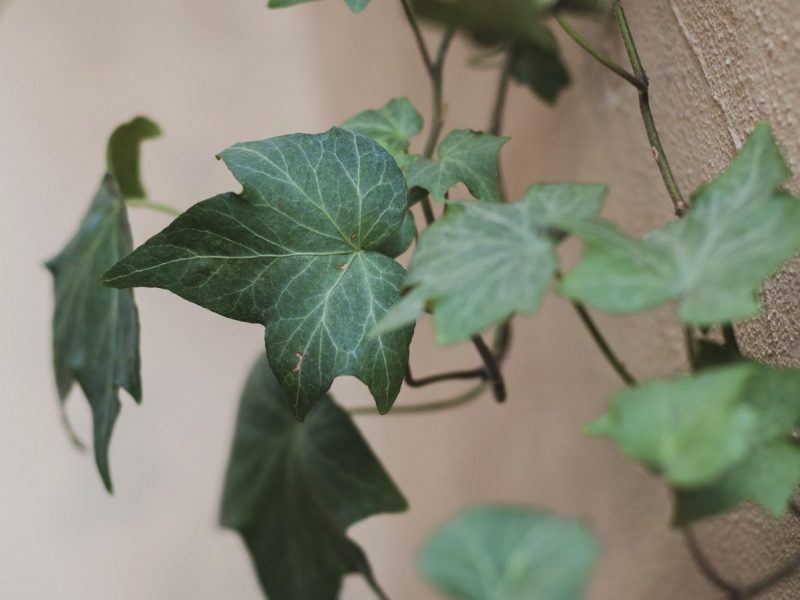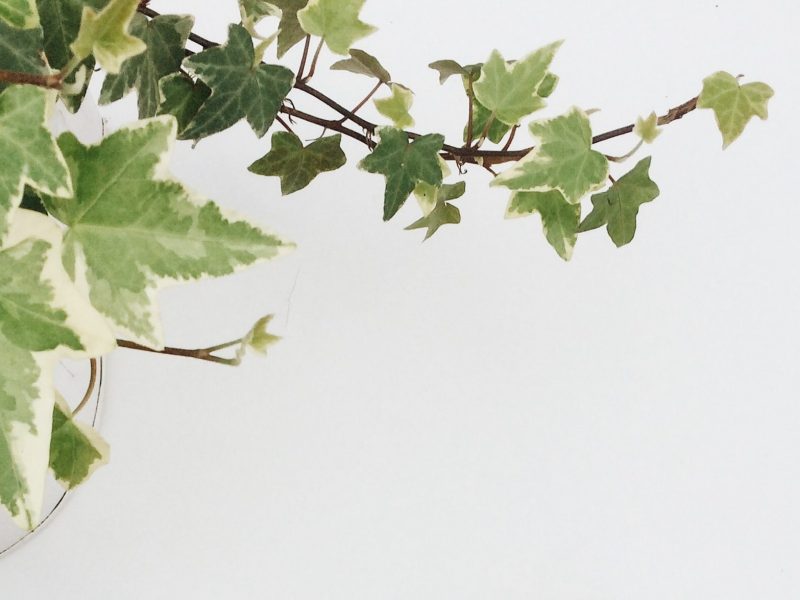
Although English Ivy plants can be somewhat forgiving when it comes to their care and environment, this doesn’t mean they are immune to the issues that we are all so familiar with when it comes to caring for our houseplants.
If your English Ivy is showing signs that it might be dying, then it’s vital you act quickly to correctly diagnose the issue and make the needed changes. Catching the issue early means it won’t have taken a complete hold over your plant and makes solving it a lot quicker and painless
Below we will be going through each of the potential reasons why your English Ivy is dying, alongside tips on how to make the right diagnosis, treat the issue and also prevent it from happening again in future.
A dying English Ivy can suggest underwatering
One of the most common causes of a dying English Ivy is dying is a lack of water. Although they can adapt well to a range of environments, including their soil moisture, consistent underwatering can cause some real damage. This can happen for one of two reasons. Either you have totally forgotten to water your plant for the last few weeks or months or your plant is suffering because it is consistently being watered slightly less than it needs.
Regardless of the cause, underwatering most commonly shows up through the following symptoms: dry leaves, light brown spots on the leaves and drooping stems. It can also happen that your plant loses a few leaves if the issue doesn’t get solved in time. These leaves are often crispy and dry before they call off your dying English Ivy.
Before you start watering your plant more frequently, it’s important to be sure that underwatering is the cause of the trouble. Take your plant out of its pot to see how dry the potting mix feels. This also gives you an opportunity to inspect the root system. Crispy roots will suggest underwatering.
Your first instinct to reverse this issue and revive your dying plant might be to drown your English Ivy to make up for the lack of water, but this can actually cause more damage and shock your plant.
Instead, we recommend watering your plant a little bit once a day for a full week. This will help to moisten the soil without shocking the plant (which can happen if their environment changes suddenly). A moisture meter can help with finding a better watering routine moving forward.
Overwatering could also be killing your English Ivy
If you notice that your English Ivy has started drooping, looking quite limp and sickly then overwatering might be the cause. Other symptoms include soft leaves and stems as well as yellow patches across the leaves.
If you think that you may have overwatered your English Ivy it is best to replace the soil straight away rather than just sit and wait for it to dry up over time. The reason for this is that it will take many days and maybe even a week for the potting mix to dry out and in that time you risk more damage being done to your already dying English Ivy. This can make it trickier to solve the issue as it kills more of your plant.
To combat the issue long-term, make sure to check the moisture in the soil before you water it. There are two really easy ways to make sure that it definitely needs water depending on how you water it.
If you use a top-down watering approach, check the moisture at the top of the soil, if it is still damp then wait a few days before watering. However, if you use a bottom-up watering approach then use the chopstick method, the lifting method or a moisture meter to figure out how dry the soil is.
Moving forward, your watering schedule should change throughout the year depending on the growing seasons. English Ivy plants go dormant in winter so don’t be alarmed if there is not much growth happening. This also means that the amount of water needed dramatically increases so it becomes a lot easier to accidentally overwater in these darker months.
A dying English Ivy could be caused by low light
If your plant looks very leggy (the new stems aren’t growing many leaves on the vine) or if the new leaves are very small and solid green, then this is likely caused by a lack of sunlight.
This tends to be a lot more common in winter as the sun is weaker and out for less of the day, but can also happen in summer if they are in a dark corner of the room.
If you suspect that a lack of natural sunlight is the cause, start by placing your plant nearer to a window to help revive it. If this happens during winter, you can get away with placing it right by the window as the direct sun rays won’t be as intense as in summer.
However, if this is happening during the height of summer, you’ll want to be a little more cautious as to how much direct light is hitting the leaves (more on that below).
Too much sunlight could also be to blame
The reason we just warned you about giving your dying plant too much intense direct sunlight is that it can really dry out the leaves, turning them brown and crispy.
There is often a misconception that there is no such thing as too much light for a houseplant. But this couldn’t be further from the truth.
Direct sunlight will very quickly scorch and burn the leaves of your English Ivy which is irreversible. It will leave yellow or brown patches on the leaves as well as very dry leaf tips and vines which make the plant look as though it is dying – and over time it will!
If this has already happened to your English Ivy, trim away the scorched leaves and move your plant to an area of your home with indirect light. You might also need to think about moving your plant around depending on the seasons. You want to ensure that you are maximising on the light in winter, whilst not giving it intense summer sunlight. It can be a bit of a balancing act.
Check your plant for signs of a pest infestation
A slightly less common reason why your English Ivy may be dying is a pest infestation. It can happen that pests such as mealybugs, mites, aphids, whiteflies and scale insects make themselves a little too cosy at home on your plant.
Pests are often more common on plants that have either spent some of the year growing outdoors or are already suffering from another issue.
Check your plant thoroughly for pests and don’t forget to check the potting mix as well. If you find pests on your English Ivy we recommend removing the worst affected parts of the plant before giving the whole plant a shower. Then you want to start rigorously treating your plant with neem oil and insecticide.
Those are the most common factors that can cause your beautiful and beloved English Ivy to start dying. Moving forward, we recommend that you build regular check-ups into your care routine for all houseplants. This will help you spot any very early warning signs and you can begin to treat any problems before they have really fully developed. A quick check-up and a monthly intense check-up can really help the fight against these common problems.
Check out our English Ivy care guide to find out more about how to keep your plant happy and healthy.














